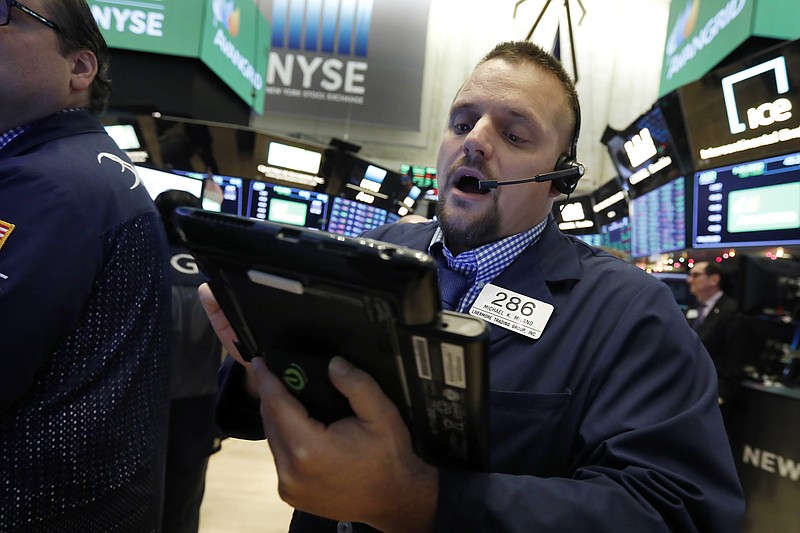Stocks slumped on Wall Street Tuesday as traders worried the U.S. and China made less progress than originally thought on defusing their dispute over trade. Bond prices surged, sending yields sharply lower as investors turned to lower-risk assets.
The Dow Jones Industrial Average fell nearly 800 points and the yield on the benchmark 10-year Treasury note declined to its lowest level in three months.
The wave of selling erased the market’s gains from a day earlier, when stocks rallied after the administration said U.S. and China agreed to a temporary truce in their trade dispute. Investors’ confidence in that truce faltered Tuesday, contributing to renewed fears that the disagreement between the two economic powerhouses could slow the global economy.
“This trade issue is the big overhang, the biggest ceiling, if you will, to keeping the markets from moving higher,” said Randy Frederick, vice president of trading & derivatives at Charles Schwab.
Technology companies, banks and industrial stocks accounted for much of the broad sell-off. Utilities stocks rose. Smaller-company stocks fell more than the rest of the market.
Big losses for Boeing and Caterpillar, major exporters which would stand to lose much if trade tensions persist, weighed on the Dow.
The bond market signaled its concerns as the gap between two-year and 10-year Treasurys reached its narrowest difference since 2007. The 10-year yield is still higher, but not by much.
When yields for long-term bonds drop lower than yields for short-term bonds, it’s what economists call an “inverted yield curve.” It indicates investors are forecasting a weaker economy and inflation in coming years. An inverted yield curve has also preceded each recession of the last 60 years, though sometimes by more than a year.
“You have the drop in bond yields and the implications on growth going forward,” said Willie Delwiche, investment strategist at Baird. “The bigger issue is you have this unwind from yesterday’s rally.”
The S&P 500 index slid 90.31 points, or 3.2 percent, to 2,700.06. The Dow plunged 799.36 points, or 3.1 percent, to 25,027.07, more than erasing its 488-point gain over the previous two trading days. It was down as much as 818 points earlier.

